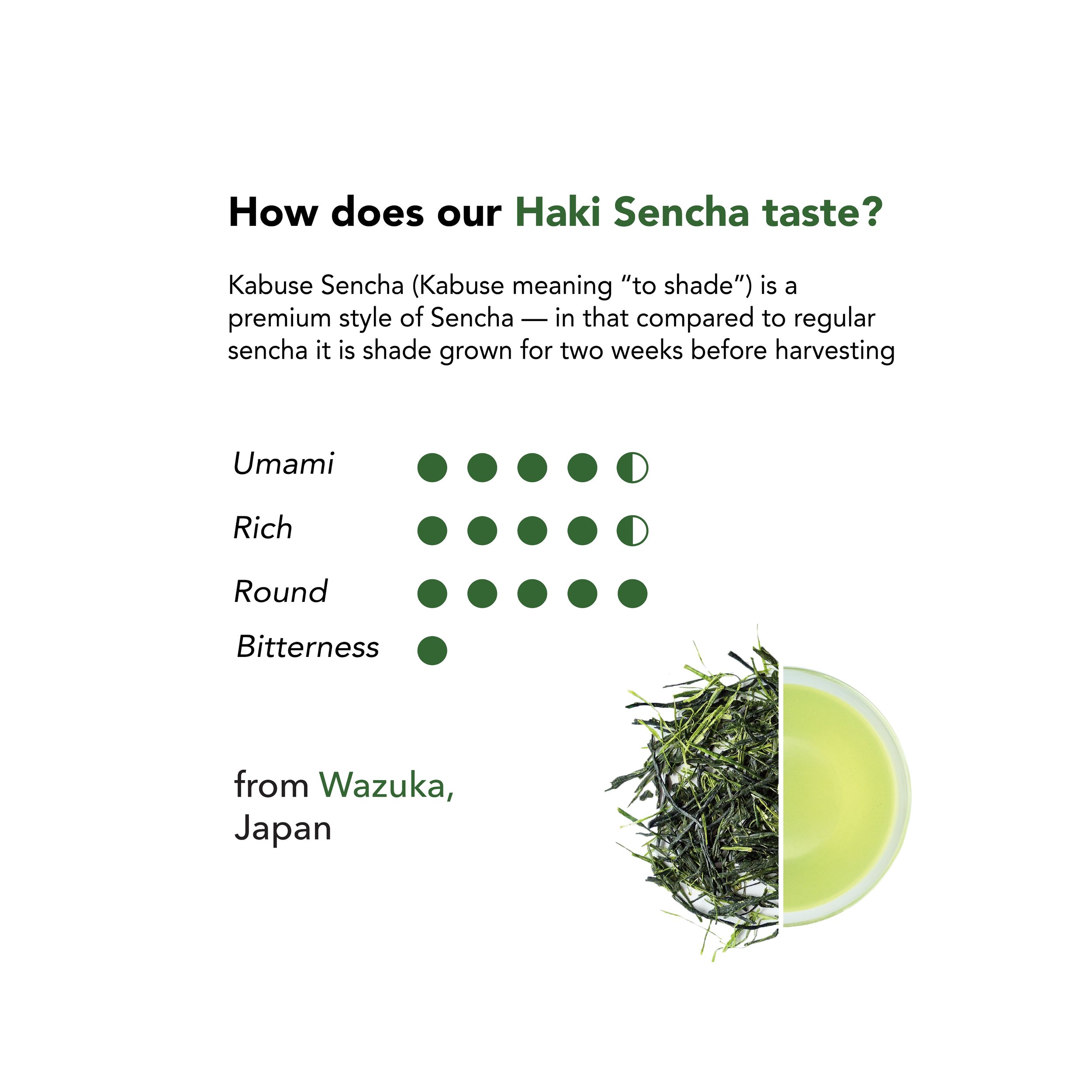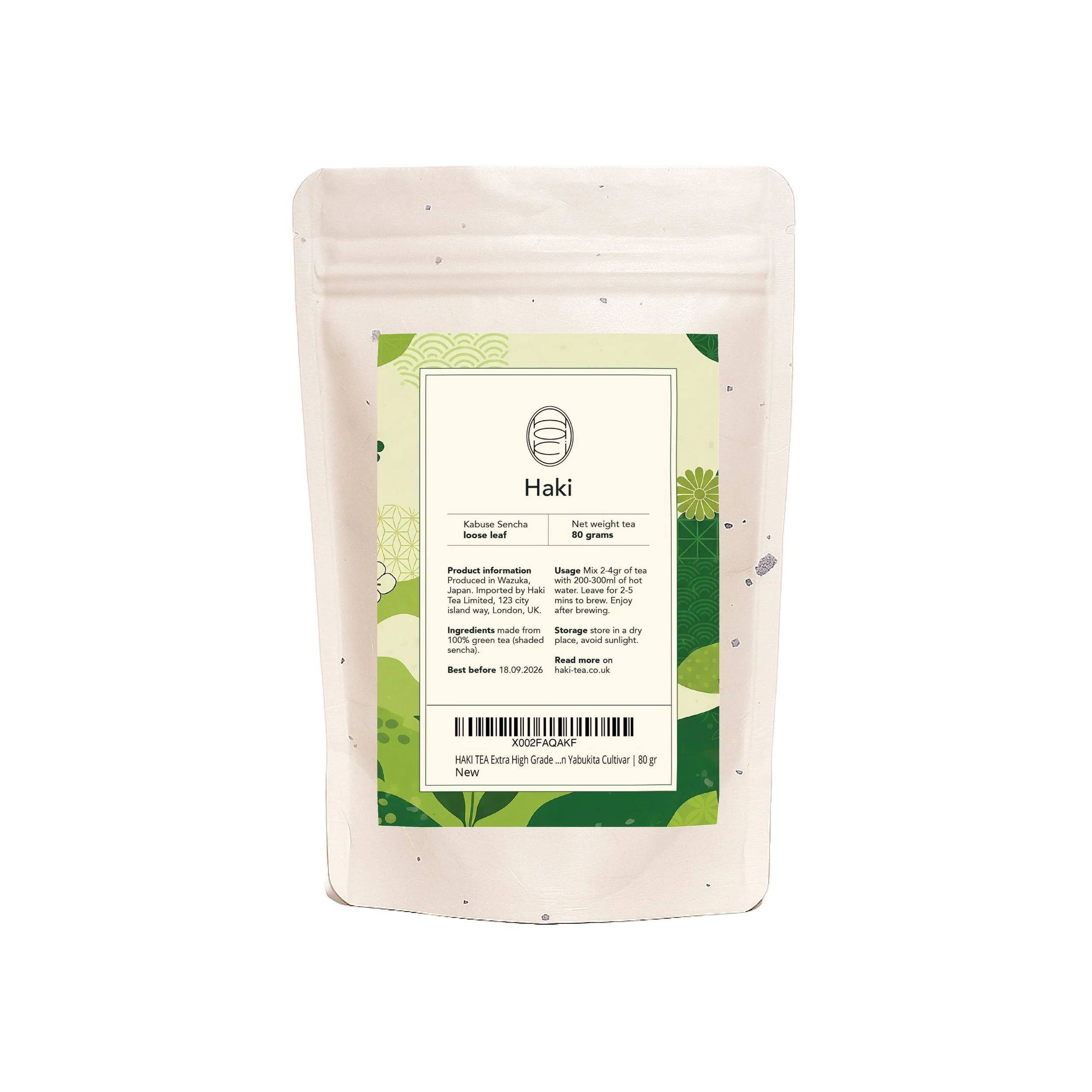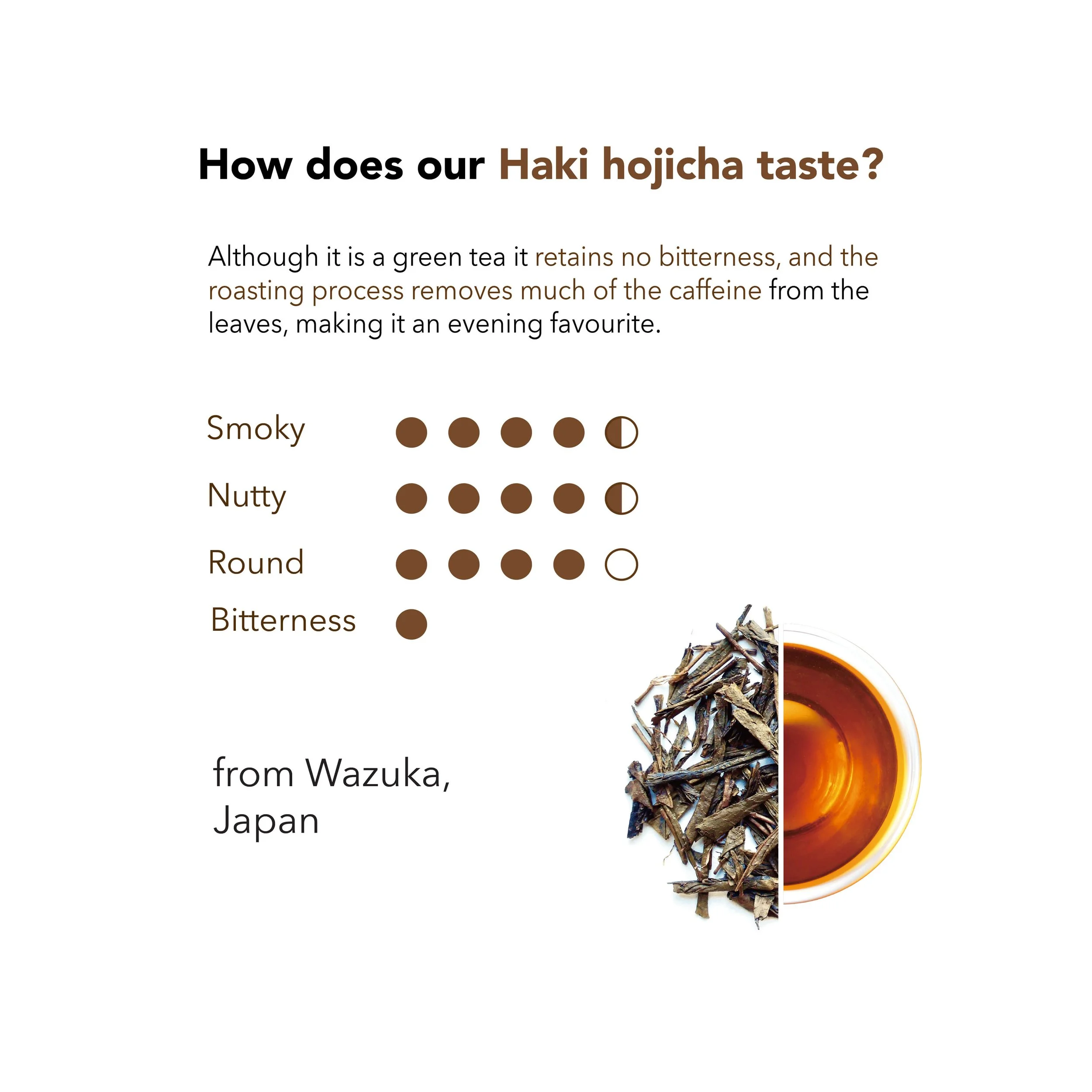How we recommend drinking the Kabuse Sencha Green Tea
2g to 4g of sencha ⋅ 60-70°C ⋅ 200-300ml of hot water
Unlike typical green tea sencha, Kabuse sencha is shade grown to give it a premium rich umami taste. As the shade reduces sunlight by as much as 85% (to encourage the plants to produce wide, tender, chlorophyll-rich tea leaves) this green tea is more delicate and requires less hot water than normal tea when being brewed.
| Taste | Rich umami flavour |
|---|---|
| Body | Rich |
| Texture | Rounded |
| Length | Long |
| Harvest | May |
| Tea Cultivar | Yabukita |
| Origin | Wazuka |
| Cultivation | Shaded |
| Processing | Lightly Steamed, Rolled, Dried |
Why choose Kabuse Sencha?
Choose Kabuse Sencha for its perfect balance between freshness and depth. Unlike regular sencha, Kabuse Sencha is partially shade-grown for about two weeks before harvest — a method that enhances its umami richness and smooth sweetness while softening any bitterness. This careful cultivation gives the tea a beautiful jade-green liquor, a velvety mouthfeel, and complex flavour layers — vegetal, subtly sweet, and gently savory.
In short, Kabuse Sencha combines the vibrant character of sencha with the refined smoothness of shaded teas like gyokuro, making it an ideal choice for anyone who wants a truly premium Japanese green tea experience.
Sencha Green Tea FAQs
-
Sencha is Japan’s most popular tea, instantly recognisable for its vibrant emerald colour and fresh, grassy flavour. The name literally means “brewed tea,” and it accounts for around 80% of all green tea produced in Japan. Once harvested, the leaves are quickly steamed for 40–50 seconds to prevent oxidation, locking in their bright green hue and lively aroma. They’re then shaped through a series of rolling stages — rough, strong, middle, and fine — giving Sencha its signature slender, needle-like appearance that’s so characteristic of Japanese teas.
-
Kabuse Sencha , also known as “shaded tea,” is a premium variety prized for its rich umami depth. The tea plants are partially covered just after the new leaves start to sprout in early May, reducing sunlight by up to 85%. This gentle shading encourages the growth of broad, tender leaves packed with chlorophyll, resulting in a smooth, flavourful brew best enjoyed at around 60°C.
-
Sencha is high in catechins (especially Epigallocatechin gallate = EGCG), which help neutralise free radicals and reduce oxidative stress. This antioxidant effect is linked to supporting cell health and slowing ageing-related damage.
Studies suggest green teas like sencha may help lower “bad” LDL cholesterol, reduce blood pressure, and improve vascular function.
The combination of catechins + modest caffeine may boost metabolism and fat oxidation (burning) to some degree. The effects are modest though and best when paired with diet / exercise.
Similar to matcha Sencha contains L‑theanine (an amino acid) + caffeine; this combo can enhance alertness while promoting a calmer state of mind.
The antioxidant content may contribute to skin health: fighting free radicals, reducing signs of ageing, supporting elasticity.






















